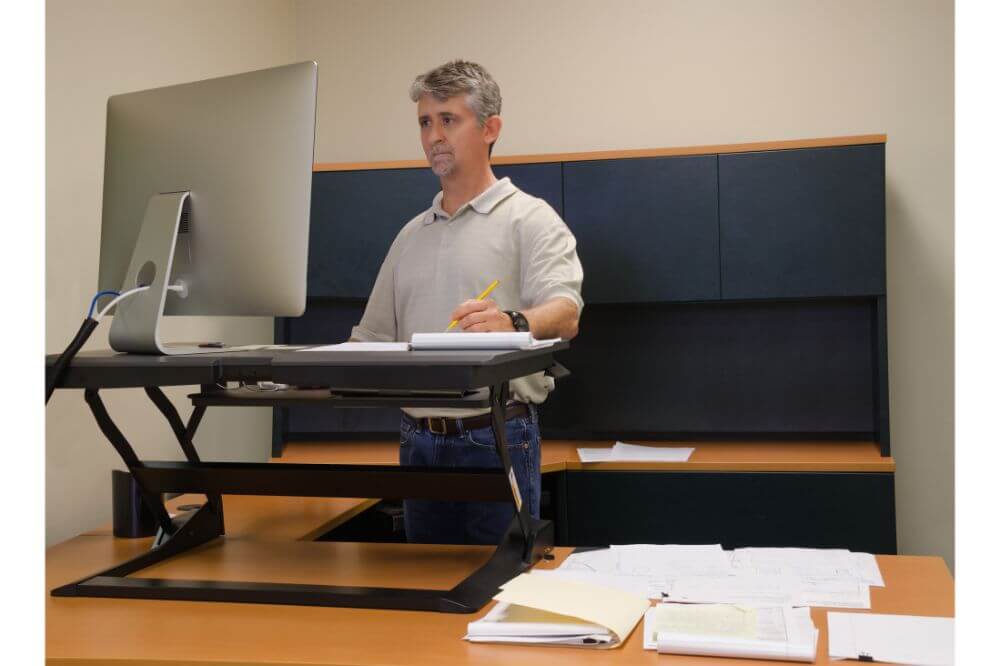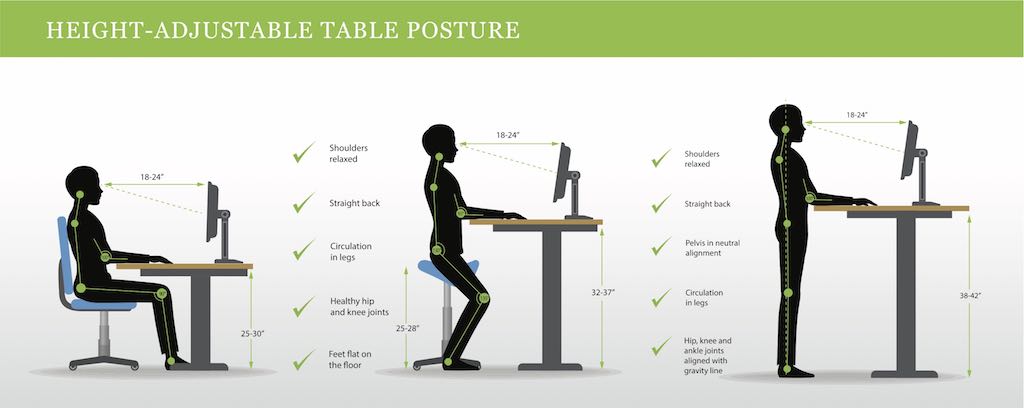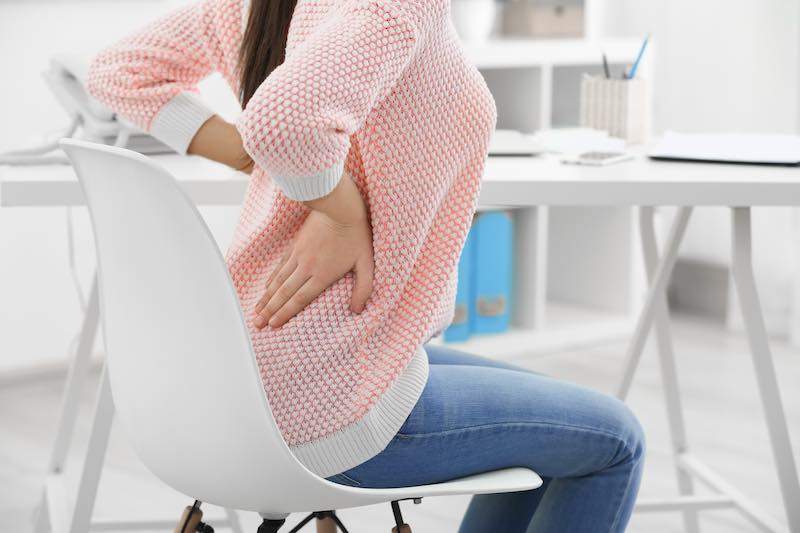
Are Standing Desks Better For Your Back?
Table of Contents
This is a question that has been answered in many ways by experts and commentators.
Some answers have been positive, some have been negative, and there are somewhere the jury seems to be out with no strong opinion in either direction.
In this article we will seek to answer it as best we can by gathering the facts, rather than opinions.
What Is A Standing Desk?
It may be the case that you haven’t heard of the term ‘standing desk’ so we will clear that up first.
A standing desk, as the name implies, is a desk that you stand up to use, rather than sitting, as you would normally.
Standing desks comes in many styles and designs, but the most popular are those known as ‘sit-stand’ desks.
Sit-stand desks have the means for you to adjust the height of the desktop so you can set it at the most comfortable height for yourself.
It also allows you to use the desk sitting down or standing up.

Back Issues Arising From Sitting Down
While sitting down would not normally cause any issues in relation to your back, there is a lot of research that shows that sitting down at a desk for long periods of time can cause problems.
It is the lower back where many of these problems occur, with the leading cause of pain in that area being postural stress.
Postural stress can be caused in several ways, such as sleeping in the wrong position, prolonged lifting and bending, sitting for long periods, and in particular sitting in the wrong way or wrong posture to be exact.
Sitting in the wrong posture can happen in several ways when you are sitting, and these include leaning forward from your lower back or having your shoulders rolled forward.
Also, looking at a screen or monitor which is too low causes your head to lean forward with this leading to excess strain on your neck and upper back.
Undoubtedly as a child, or maybe even as an adult, you will have told to ‘Stop Slouching’, and although it might not have seemed it at the time, this was good advice.
Slouching in a chair puts excessive pressure on your lower back area, with the most severe examples being damaged discs which can be extremely painful.

How Should You Sit?
From the previous section, you might have the impression that you should not sit down at all, but that is not the case as it is inevitable that you are going to be sitting at some point of every day.
What you do need to be aware of is, the correct way to sit, especially how to sit at a desk.
You should try to sit upright at all times, keeping your shoulders relaxed and using the back of the chair you are sitting in as support.
If you wish, you can place a small cushion between the chair and your lower back.
Ideally, you want an office chair that has armrests, as resting your arms takes away some of the strain from your shoulders and upper back.
Other ways you can look after your back is to keep your feet flat on the floor and ensure that any monitor you are looking at is at the correct height. That will normally be the center of the screen being in line with your eyes.

How Does A Standing Desk Help Your Back?
Let’s be clear that a standing desk cannot help your back if everything else you do, such as sitting with a poor posture, continues as before.
A standing desk is not some kind of magic cure-all, but that being said, it can contribute significantly to helping reduce back pain and promoting the health of your back.
A recent study showed that employees who used a sit-stand desk, meaning they were standing some of the time they were using the desk, reduced the amount of back pain by 50% compared to those who only sat at their desks.
One of the reasons this might be the case is that when you stand, the pressure exacted on the discs of your back is less than when you are sitting.
It is also known that if you sit down for long periods, the disks tend to bulge which can lead to pain too.
If you are standing, you will tend to move about, so those same bulging issues do not occur.
Standing at a desk also means your spine is in its natural ‘S’ shape, which means it under less stress.
Conversely sitting means it is in a ‘C’ shape, which increases the stress on the spine, especially to the soft tissues therein.

Conclusion
Despite some of the hype, a standing desk is not going to suddenly cure a painful back overnight, nor does it mean you can never sit down at your desk again.
However, research has shown standing to work at a desk does have some health benefits, and that includes your back.
